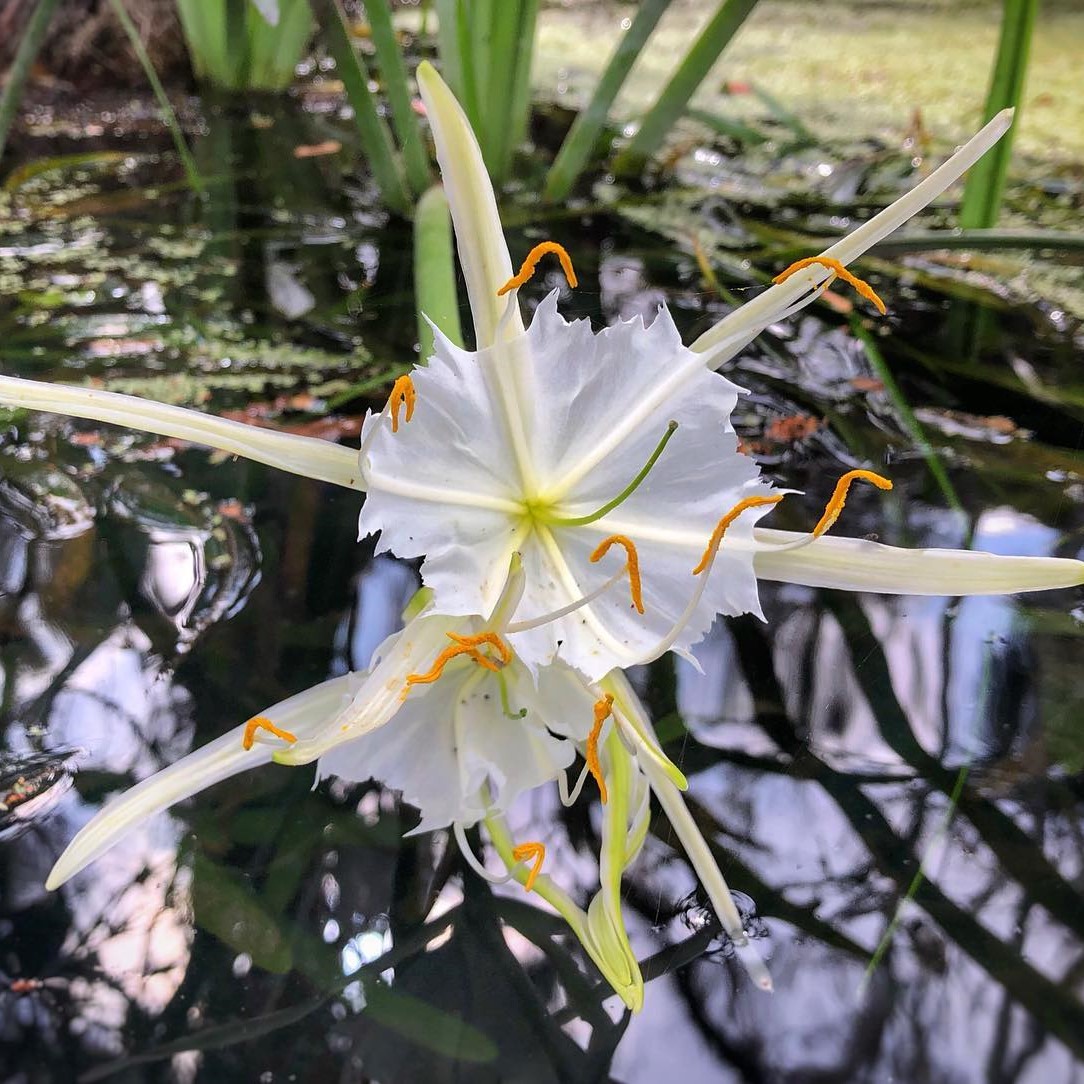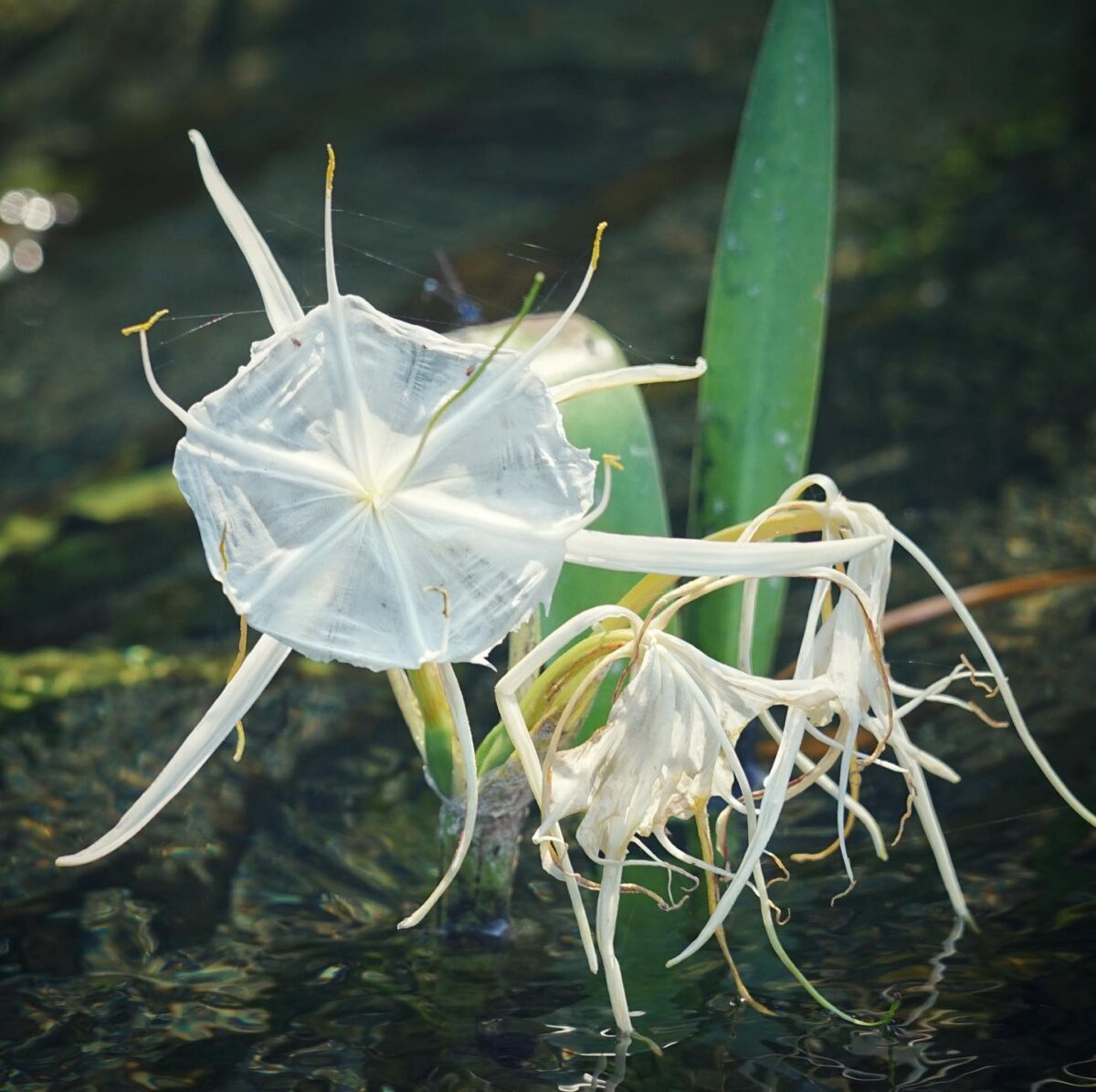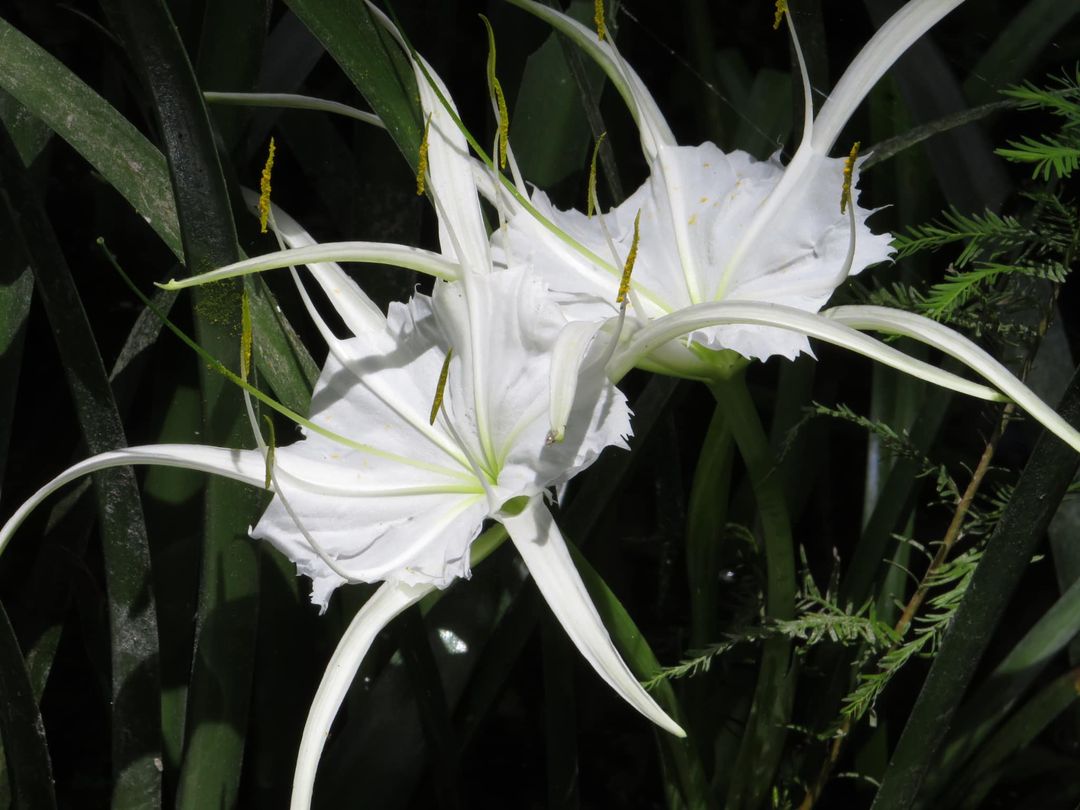Spring-run spiderlily
Pictured above: Spring-run spiderlily (Hymenocallis rotata) by Damien Rockwood. Click on terms for botanical definitions. View post as a PDF.
Fall is a wonderful time to float down one of North Florida’s beautifully clear spring-fed rivers, their shores resplendent with wildflowers! Among them, the Spring-run spiderlily (Hymenocallis rotata) stands out with its large white flowers rising out of the shallow water along spring run and river edges. The bright blooms are a beacon for their primary pollinator, Sphinx moths.
Spring-run spiderlilies have dark green, nearly erect strap-like leaves that arise directly from an onion-like bulb and grow to about three feet long. A single flowering scape grows to a similar height or a bit taller and typically bears two to four blooms. Flowers have a slender floral tube that is divided at the tip into six long narrow white tepals. Above the tepals sits a thin white membranous staminal cup that holds the bases of prominent long stamens, each with large noticeable anthers bearing yellow pollen.


The genus Hymenocallis is from the Greek hymen, meaning “membrane,” and callis, meaning “beautiful.” The species epithet rotata is Latin for “circular.”
Florida is a diversity hotspot for the genus Hymenocallis. It is home to 13 of the 16 species native to the United States; seven of them are endemic to the state. Given the similarities in appearance among the different species, identification can be a challenge. The Florida Department of Agriculture and Consumer Services has published a great guide of our native spiderlilies.
Family: Amaryllidaceae (Amaryllis family)
Native range: Eastern Panhandle and peninsular Florida south to Hillsborough and Orange counties
To see where natural populations of Spring-run spiderlily have been vouchered, visit florida.plantatlas.usf.edu
Hardiness: Zones 8B–9B
Lifespan: Perennial
Soil: Saturated sandy soils
Exposure: Full sun to part shade
Growth habit: up to 3 feet
Garden tips: Suitable for a naturalistic setting, the Spring-run spiderlily requires inundation and would do best in the shallow waters of a slow-moving stream.
Plants are occasionally available from nurseries that specialize in Florida native plants. Visit www.PlantRealFlorida.org to find a nursery in your area.
For information on other Hymenocallis species see:

